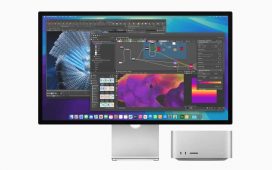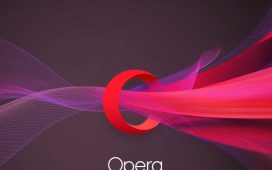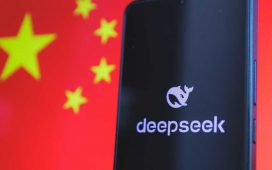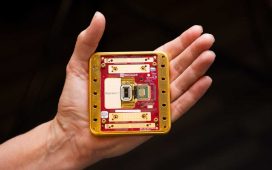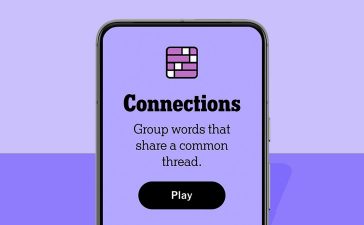Once you get past the chatbot hype, it’s clear that generative AI is a useful tool, providing a way of navigating applications and services using natural language. By tying our large language models (LLMs) to specific data sources, we can avoid the risks that come with using nothing but training data.
While it is possible to fine-tune an LLM on specific data, that can be expensive and time-consuming, and it can also lock you into a specific time frame. If you want accurate, timely responses, you need to use retrieval-augmented generation (RAG) to work with your data.
RAG: the heart of Microsoft’s Copilots
The neural networks that power LLMs are, at heart, sophisticated vector search engines that extrapolate the paths of semantic vectors in an n-dimensional space, where the higher the dimensionality, the more complex the model. So, if you’re going to use RAG, you need to have a vector representation of your data that can both build prompts and seed the vectors used to generate output from an LLM. That’s why it’s one of the techniques that powers Microsoft’s various Copilots.
I’ve talked about these approaches before, looking at Azure AI Studio’s Prompt Flow, Microsoft’s intelligent agent framework Semantic Kernel, the Power Platform’s Open AI-powered boost in its re-engineered Q and A Maker Copilot Studio, and more. In all those approaches, there’s one key tool you need to bring to your applications: a vector database. This allows you to use the embedding tools used by an LLM to generate text vectors for your content, speeding up search and providing the necessary seeds to drive a RAG workflow. At the same time, RAG and similar approaches ensure that your enterprise data stays in your servers and isn’t exposed to the wider world beyond queries that are protected using role-based access controls.
While Microsoft has been adding vector search and vector index capabilities to its own databases, as well as supporting third-party vector stores in Azure, one key database technology has been missing from the RAG story. These missing databases are graph databases, a NoSQL approach that provides an easy route to a vector representation of your data with the added bonus of encoding relationships in the vertices that link the graph nodes that store your data.
Adding graphs to Azure AI with Neo4j
Graph databases like this shouldn’t be confused with the Microsoft Graph. It uses a node model for queries, but it doesn’t use it to infer relationships between nodes. Graph databases are a more complex tool, and although they can be queried using GraphQL, they have a much more complex query process, using tools such as the Gremlin query engine.
One of the best-known graph databases is Neo4j, which recently announced support for the enterprise version of its cloud-hosted service, Aura, on Azure. Available in the Azure Marketplace, it’s a SaaS version of the familiar on-premises tool, allowing you to get started with data without having to spend time configuring your install. Two versions are available, with different memory options built on reserved capacity so you don’t need to worry about instances not being available when you need them. It’s not cheap, but it does simplify working with large amounts of data, saving a lot of time when working with large-scale data lakes in Fabric.
Building knowledge graphs from your data
One key feature of Neo4j is the concept of the knowledge graph, linking unstructured information in nodes into a structured graph. This way you can quickly see relationships between, say, a product manual and the whole bill of materials that goes into the product. Instead of pointing out a single part that needs to be replaced for a fix, you have a complete dependency graph that shows what it affects and what’s necessary to make the fix.
A tool like Neo4j that can sit on top of a large-scale data lake like Microsoft’s Fabric gives you another useful way to build out the information sources for a RAG application. Here, you can use the graph visualization tool that comes as part of Neo4j to explore the complexities of your lakehouses, generating the underlying links between your data and giving you a more flexible and understandable view of your data.
One important aspect of a knowledge graph is that you don’t need to use it all. You can use the graph relationships to quickly filter out information you don’t need for your application. This reduces complexity and speeds up searches. By ensuring that the resulting vectors and prompts are confined to a strict set of relationships, it reduces the risks of erroneous outputs from your LLM.
There’s even the prospect of using LLMs to help generate those knowledge graphs. The summarization tools identify specific entities within the graph database and then provide the links needed to define relationships. This approach lets you quickly extend existing data models into graphs, making them more useful as part of an AI-powered application. At the same time, you can use the Azure Open AI APIs to add a set of embeddings to your data in order to use vector search to explore your data as part of an agent-style workflow using LangChain or Semantic Kernel.
Using graphs in AI: GraphRAG
The real benefit of using a graph database with a large language model comes with a variation on the familiar RAG approach, GraphRAG. Developed by Microsoft Research, GraphRAG uses knowledge graphs to improve grounding in private data, going beyond the capabilities of a standard RAG approach to use the knowledge graph to link related pieces of information and generate complex answers.
One point to understand when working with large amounts of private data using an LLM is the size of the context window. In practice, it’s too computationally expensive to use the number of tokens needed to deliver a lot of data as part of a prompt. You need a RAG approach to get around this limitation, and GraphRAG goes further, letting you deliver a lot more context around your query.
The original GraphRAG research uses a database of news stories, which a traditional RAG fails to parse effectively. However, with a knowledge graph, entities and relationships are relatively simple to extract from the sources, allowing the application to select and summarize news stories that contain the search terms, by providing the LLM with much more context. This is because the graph database structure naturally clusters similar semantic entities, while providing deeper context in the relationships encoded in the vertices between those nodes.
Instead of searching for like terms, much like a traditional search engine, GraphRAG allows you to extract information from the entire dataset you’re using, whether transcripts of support calls or all the documents associated with a specific project.
Although the initial research uses automation to build and cluster the knowledge graph, there is the opportunity to use Neo4j to work with massive data lakes in the Microsoft Fabric, providing a way to visualize that data so that data scientists and business analysts can create their own clusters, which can help produce GraphRAG applications that are driven by what matters to your business as much as by the underlying patterns in the data.
Having a graph database like Neo4j in the Azure Marketplace gives you a tool that helps you understand and visualize the relationships in your data in a way that supports both humans and machines. Integrating it with Fabric should help build large-scale, context-aware, LLM-powered applications, letting you get grounded results from your data in a way that standard RAG approaches can miss. It’ll be interesting to see if Microsoft starts implementing GraphRAG in its own Prompt Flow LLM tool.
Copyright © 2024 IDG Communications, Inc.


